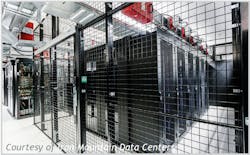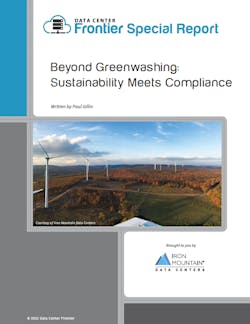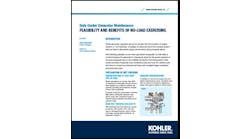Understanding Sustainability Standards and Regulations
We continue our article series on metrics and mechanisms that data center operators can use track progress towards their environmental, social, and corporate governance goals. This week we'll look at key sustainability standards and regulations.
Of the many standards published by ISO, the five listed below are the most relevant to data center operators.
The objective of this standard is to help organizations:
- Develop a policy for more efficient use of energy,
- Set targets and objectives to meet the policy,
- Use data to better understand and make decisions about energy use,
- Measure the results, and communicate with top organizational leadership,
- Review the effectiveness of the energy management system, and
- Continually improve energy management.
The 30-page document covers requirements for a systematic, data-driven, and facts-based process that is focused on continually improving energy performance. It can be applied to organizations of any size regardless of the types of energy consumed. ISO 50001 also provides guidelines for understanding the contextual needs of the organization, leadership responsibilities, planning steps, performance evaluation, and improvement.
This quality management standard can be applied to businesses of any size in any industry. It is based on such principles as strong customer focus, top management sponsorship, a process-based approach to quality, and continual improvement. The objective is to ensure that customers get consistent, high-quality products and services. In the data center, it provides a way for operators to balance sustainability with consistent quality, availability, and security.
ISO 9001 can be used as a guideline for process optimization and organizations may also choose to be certified by a qualified third-party assessor. More than one million organizations in over 170 countries have been certified.
These guidelines set out the criteria for an environ- mental management system and map a framework for establishing and maintaining an effective environmental management system. Designed for any type of organization, regardless of its activity or sector, the standard is intended to assure management, employees, and external stakeholders that environmental impact is being materially measured, quantified and improved. More than 300,000 ISO 14001 certifications have been granted.
This collection of standards — and ISO 14064-1:2018 in particular — provides clarity and consistency for quantifying, monitoring, reporting, and validating or verifying greenhouse gas emissions and removals to support sustainable development.
It is a standardized framework that helps in the management of risk, adherence to regulatory/ government greenhouse gas programs, and guidance for managing and reporting responsibilities and verification activities. It also provides requirements for the use and allocation of renewable power.
An internationally recognized framework, ISO 14060 can be used to compare entities that follow the same family of standards.
While not specific to sustainability, the ISO 27001 stand- ard specifies the security of information spanning:
- Policy,
- Organizational practices,
- Asset controls,
- Personnel,
- Physical and environmental security,
- Operations management,
- And other areas
It is considered an important guideline for establishing a baseline of organizational rigor that is needed for responsible governance and management.
Download the entire special report, "Beyond Greenwashing: Sustainability Meets Compliance," courtesy of Iron Mountain Data Centers, to learn more. In our next article, we'll discuss the pros and cons of sustainability certification.






